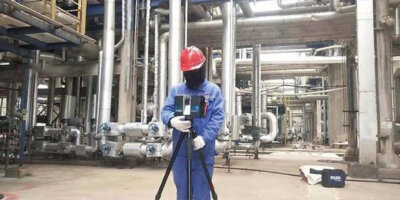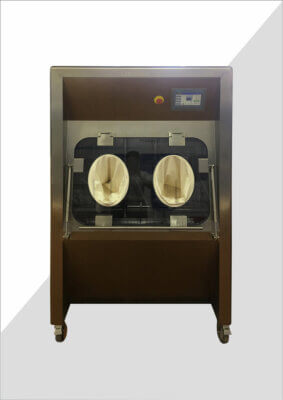Healthcare facilities worldwide are increasingly recognizing the critical importance of proper waste management, particularly when it comes to potentially hazardous materials. The World Health Organization (WHO) has established comprehensive guidelines for healthcare waste management, and Effluent Decontamination Systems (EDS) play a crucial role in meeting these standards. This article explores how EDS compliance aligns with WHO guidelines, ensuring safe and environmentally responsible waste disposal practices in medical settings.
The proper management of healthcare waste is essential for protecting public health, preserving the environment, and maintaining regulatory compliance. WHO guidelines provide a framework for healthcare facilities to implement effective waste management strategies, with a particular emphasis on the treatment of liquid waste. EDS technology has emerged as a key solution in this arena, offering a reliable method for decontaminating potentially infectious effluents before their release into the environment.
As we delve into the intricacies of EDS compliance with WHO guidelines, we'll examine the various aspects of waste management, from segregation and handling to treatment and disposal. We'll explore how EDS technology addresses specific WHO recommendations and contributes to overall waste management best practices in healthcare settings.
"Effective healthcare waste management is not just about regulatory compliance; it's a fundamental aspect of patient care, environmental stewardship, and public health protection."
Table: Overview of WHO Guidelines for Healthcare Waste Management
| Aspect | WHO Guideline Recommendations | EDS Compliance Measures |
|---|---|---|
| Waste Segregation | Separate hazardous and non-hazardous waste | EDS focuses on treating liquid biohazardous waste |
| Treatment Methods | Use validated decontamination processes | EDS employs thermal or chemical decontamination |
| Environmental Impact | Minimize environmental pollution | EDS ensures safe effluent release |
| Worker Safety | Protect staff from exposure risks | EDS reduces handling of infectious materials |
| Documentation | Maintain records of waste treatment | EDS systems provide treatment cycle logs |
What are the key components of an effective EDS for WHO compliance?
An effective Effluent Decontamination System (EDS) is crucial for healthcare facilities aiming to comply with WHO guidelines for waste management. These systems are designed to treat potentially hazardous liquid waste before it enters the general sewage system, ensuring environmental safety and public health protection.
The key components of an EDS include a collection tank for storing untreated effluent, a treatment chamber where decontamination occurs, and a control system to manage the process. Some advanced systems also incorporate filtration units and monitoring devices to ensure treatment efficacy.
QUALIA offers state-of-the-art EDS solutions that align with WHO guidelines, providing robust decontamination capabilities for various biosafety levels.
"A well-designed EDS is the cornerstone of compliant healthcare waste management, offering a reliable barrier against the release of potentially infectious materials into the environment."
| EDS Component | Function | WHO Guideline Alignment |
|---|---|---|
| Collection Tank | Safely stores untreated effluent | Prevents premature release of hazardous waste |
| Treatment Chamber | Decontaminates liquid waste | Ensures proper treatment before disposal |
| Control System | Manages treatment process | Enables consistent and verifiable decontamination |
How does EDS technology address WHO's concern for environmental protection?
WHO guidelines emphasize the importance of minimizing the environmental impact of healthcare waste. EDS technology directly addresses this concern by ensuring that liquid waste is thoroughly decontaminated before being released into the environment.
The decontamination process typically involves either thermal treatment or chemical disinfection, both of which are capable of neutralizing a wide range of pathogens. By treating effluents at the source, EDS prevents the spread of potentially harmful microorganisms through water systems.
Moreover, advanced EDS solutions often incorporate features that reduce water and energy consumption, aligning with WHO's broader environmental sustainability goals.
"EDS technology serves as a critical barrier, preventing the release of biohazardous materials into the environment and supporting healthcare facilities in their commitment to ecological responsibility."
| Environmental Concern | EDS Solution | WHO Guideline Alignment |
|---|---|---|
| Pathogen Spread | Effective decontamination | Prevents waterborne disease transmission |
| Resource Conservation | Efficient water and energy use | Supports sustainable healthcare practices |
| Ecosystem Protection | Safe effluent release | Minimizes impact on aquatic environments |
What role does EDS play in ensuring worker safety in healthcare settings?
Worker safety is a paramount concern in WHO guidelines for healthcare waste management. EDS technology contributes significantly to this aspect by reducing the need for direct handling of potentially infectious liquid waste.
Automated EDS systems minimize human contact with hazardous materials throughout the treatment process. From collection to final disposal, the effluent is contained within a closed system, dramatically reducing the risk of exposure for healthcare workers and waste management personnel.
Furthermore, EDS often includes safety features such as overflow protection, automatic shut-off valves, and alarm systems that alert staff to potential issues, enhancing overall workplace safety.
"By automating the handling and treatment of liquid biohazardous waste, EDS technology creates a safer work environment, aligning perfectly with WHO's emphasis on protecting healthcare workers from occupational hazards."
| Safety Aspect | EDS Feature | WHO Guideline Alignment |
|---|---|---|
| Exposure Reduction | Closed system design | Minimizes contact with infectious materials |
| Accident Prevention | Safety interlocks and alarms | Reduces risk of spills or system failures |
| Training Requirements | User-friendly interfaces | Simplifies proper waste handling procedures |
How does EDS compliance support infection control strategies in healthcare facilities?
Infection control is a critical aspect of healthcare delivery, and WHO guidelines stress its importance in waste management practices. EDS plays a vital role in supporting comprehensive infection control strategies within healthcare facilities.
By effectively decontaminating liquid waste, EDS helps break the chain of infection that could potentially spread through improperly treated effluents. This is particularly crucial in facilities dealing with highly infectious diseases or antibiotic-resistant organisms.
EDS also contributes to maintaining a hygienic environment by reducing the risk of contamination from waste handling and storage. This aligns with WHO's holistic approach to infection prevention and control in healthcare settings.
"EDS technology is an integral component of a robust infection control strategy, providing a reliable means of neutralizing potential pathogens in liquid waste and supporting overall healthcare hygiene practices."
| Infection Control Aspect | EDS Contribution | WHO Guideline Alignment |
|---|---|---|
| Pathogen Neutralization | Effective decontamination | Prevents spread of infectious agents |
| Environmental Hygiene | Reduced contamination risk | Supports overall facility cleanliness |
| Outbreak Prevention | Consistent waste treatment | Mitigates risk of healthcare-associated infections |
What documentation and monitoring processes are required for EDS compliance with WHO guidelines?
WHO guidelines emphasize the importance of proper documentation and monitoring in healthcare waste management. For EDS compliance, this translates into maintaining detailed records of system operation, treatment cycles, and maintenance activities.
Modern EDS solutions often come equipped with integrated monitoring systems that track key parameters such as temperature, chemical concentrations, and treatment duration. These systems can generate automated reports, providing evidence of compliance with WHO standards.
Regular testing and validation of the EDS's efficacy are also crucial. This may involve periodic microbiological testing of treated effluents to ensure that decontamination meets required standards.
"Comprehensive documentation and rigorous monitoring are not just regulatory requirements; they are essential tools for ensuring the ongoing effectiveness of EDS in meeting WHO guidelines for healthcare waste management."
| Documentation Aspect | EDS Feature | WHO Guideline Alignment |
|---|---|---|
| Treatment Records | Automated logging | Provides evidence of proper waste handling |
| System Performance | Real-time monitoring | Ensures consistent decontamination efficacy |
| Maintenance Tracking | Scheduled alerts | Supports system reliability and longevity |
How can healthcare facilities integrate EDS into their overall waste management strategy?
Integrating EDS into a comprehensive waste management strategy requires careful planning and coordination. WHO guidelines recommend a holistic approach to healthcare waste management, and EDS should be viewed as a key component of this broader system.
Healthcare facilities should conduct a thorough assessment of their waste streams to determine the appropriate capacity and specifications for their EDS. This may involve working with EDS providers to customize solutions that meet specific facility needs.
Staff training is crucial for effective integration. All personnel involved in waste handling should be educated on the role of EDS in the facility's waste management plan and trained in proper procedures for its use.
"Successful integration of EDS into a healthcare facility's waste management strategy requires a comprehensive approach, aligning technology, processes, and staff training with WHO guidelines for optimal environmental and public health protection."
| Integration Aspect | EDS Consideration | WHO Guideline Alignment |
|---|---|---|
| Waste Assessment | Capacity planning | Ensures appropriate treatment for all liquid waste |
| Staff Education | Operational training | Promotes proper waste handling and system use |
| Process Alignment | Workflow integration | Supports efficient and compliant waste management |
What future developments in EDS technology are anticipated to enhance WHO guideline compliance?
As healthcare waste management continues to evolve, EDS technology is expected to advance in ways that further enhance compliance with WHO guidelines. Future developments may include more energy-efficient systems, improved automation, and enhanced data analytics capabilities.
There is also a growing focus on developing EDS solutions that can handle a wider range of contaminants, including emerging pathogens and pharmaceutical waste. This aligns with WHO's emphasis on comprehensive waste treatment strategies.
Integration with broader hospital management systems is another area of potential development. This could allow for more seamless tracking of waste from generation to final disposal, improving overall compliance and efficiency.
"The future of EDS technology promises even greater alignment with WHO guidelines, offering healthcare facilities more sophisticated, efficient, and comprehensive solutions for managing liquid biohazardous waste."
| Future Development | Potential Impact | WHO Guideline Alignment |
|---|---|---|
| Enhanced Energy Efficiency | Reduced environmental footprint | Supports sustainable healthcare practices |
| Advanced Analytics | Improved compliance tracking | Facilitates more effective waste management |
| Broader Treatment Capabilities | Comprehensive waste handling | Addresses emerging healthcare waste challenges |
In conclusion, Effluent Decontamination Systems play a crucial role in helping healthcare facilities comply with WHO guidelines for waste management. By effectively treating liquid biohazardous waste, EDS technology contributes to environmental protection, worker safety, and infection control. The integration of EDS into overall waste management strategies, coupled with proper documentation and monitoring, ensures that healthcare facilities can meet and exceed WHO standards.
As EDS technology continues to evolve, it will offer even more sophisticated solutions for healthcare waste management. This ongoing development, combined with a commitment to best practices in waste handling and treatment, will enable healthcare facilities to maintain the highest standards of environmental stewardship and public health protection.
By prioritizing EDS compliance with WHO guidelines, healthcare facilities demonstrate their dedication to responsible waste management, creating safer environments for patients, staff, and communities. As the healthcare landscape continues to change, EDS will remain a critical tool in the ongoing effort to manage medical waste safely and effectively.
External Resources
Healthcare waste – World Health Organization (WHO) – This WHO fact sheet provides key facts, types of waste, health risks, environmental impact, and the WHO's response to healthcare waste management, emphasizing compliance with global guidelines.
Management of Solid Health-Care Waste at Primary Health-Care Centres – This guide from the WHO offers decision-trees and parameters to assess and select appropriate waste management methods for primary health-care centers, focusing on local conditions, safety, and environmental criteria.
Safe management of wastes from health-care activities, 2nd ed. – This comprehensive handbook by the WHO provides guidance on safe, efficient, and environmentally sound methods for handling and disposing of healthcare wastes, applicable in both normal situations and emergencies.
Safe management of wastes from health-care activities – IRIS – This document details the WHO's recommendations for developing a national program for healthcare waste management, including waste minimization, segregation, storage, transportation, and treatment options.
Environmental, Health, and Safety (EHS) Guidelines – Although not exclusively focused on healthcare waste, these World Bank guidelines include general and industry-specific recommendations for environmental, health, and safety practices that can be applied to ensure compliance with WHO guidelines for waste management.
Related Contents:
- Effluent Decontamination Systems: Safeguarding Pharmaceutical Waste Management
- Safeguarding Health: Advanced Effluent Decontamination Systems
- EDS: Revolutionizing Laboratory Safety Protocols
- Effluent Segregation: Optimizing EDS Implementation
- Revolutionizing Research: EDS in Biological Facilities
- Protecting Public Health: EDS’s Environmental Safeguards
- Enhancing Safety in Vaccine Production: The Role of EDS
- Ensuring Compliance: Navigating Regulations for Effluent Decontamination
- Navigating Regulatory Waters: Effluent Treatment in Biopharma






























